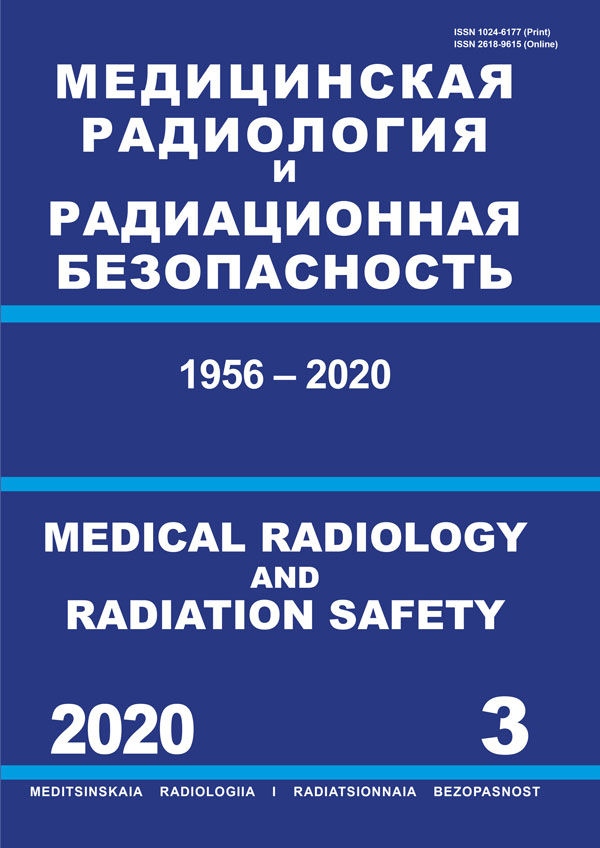Россия
г. Москва и Московская область, Россия
г. Москва и Московская область, Россия
г. Москва и Московская область, Россия
Россия
ГРНТИ 34.49 Радиационная биология
ОКСО 06.07.01 Биологические науки
ББК 28 Биологические науки
ТБК 64 Биологические науки
Purpose: To share the experience in regulation of radiation safety and protection of workers involved in management of the spent nuclear fuel (SNF) and radioactive waste (RW), as well as radiation protection of the population and environment in the vicinity of sites for temporary storage at Andreeva Bay on the Kola Peninsula. Material and methods: Spent fuel from Russian nuclear powered submarines has been stored at shore based facilities for more than 20 years, notably at Andreeva Bay. The storage facilities were for some years poorly maintained and a significant fraction of the fuel that is still in store at the site wais damaged. Over the last years, hugemuch work has been done to improve the technical infrastructure and prepare for removal of the SNF from the temporary stores, management of existing RW. Results: This paper presents progress with projects of the FMBA of Russia and NRPA cooperation for regulation of radiation safety and protection. During the researches, the following issues were addressed: radiological threat assessment to identify the priority directions of regulation; detailed analysis of the radiation situation on sites, at the territories and nearby the sites; radiation control and monitoring of the environmental conditions; development of the computer maps and geo-information system; emergency preparedness and response; improvement of radiation safety culture; etc. Based on the received results of monitoring and assessment of the current risks, site-specific regulatory documents have been developed for the bodies and institutions under the FMBA of Russia involved in the activities to control the facility. Those documents include the requirements for: radiation protection of workers and population; personal dose monitoring; the RW management including the very low level RW; implementation of the environmental monitoring; radiation monitoring nearby the Andreeva Bay SevRAO facility; and remediation of the sites as remediation criteria and regulations. The next stage of work is to carry out the regulation of large-scale removal of SNF during 2017–2021 and its subsequent transfer to Mayak PA, and operations to bring the infrastructure of the site into the hsafe conditions, i.e., ecological remediation of the site – by 2025. Lessons learnt from this work are being used in support of improved international recommendations and guidance on how to address legacy issues. Conclusion: The experience accumulated during regulation of the remediation process of the former Naval Coastal Technical Bases, has helped to identify new relevant areas of improvement of the regulatory supervision at nuclear legacy sites. The study of potential hazard of radiation exposure to the personnel during technological operations of SNF and RW management is very important issue. In this light, the regulator in cooperation of the operator should develop some effective and efficient activities for dose monitoring. When dealing with the protection of the population and environment, a methodology of comprehensive radiation and chemical monitoring should be developed and models of radiation and chemical risks should be improved taking into account features of contamination of the site under remediation. An important link of the social focus of the regulator and the operator is to improve strategies of public communications near legacy sites under remediation.
spent nuclear fuel, radioactive waste, site for temporary storage, threat assessment, radiation protection and safety, radiation monitoring, regulatory supervision, remediation
The site for temporary storage (STS) of spent nuclear fuel (SNF) and radioactive waste (RW) at Andreeva Bay on the Kola Peninsula in the Northwest Russia was originally commissioned in early 1960s as a shore technical base for the servicing of nuclear powered vessels of the Russian Northern Fleet. In 2000, responsibility for the site was given to Minatom, now called the State Atomic Energy Corporation, Rosatom. At the time, the condition of the facility’s infrastructure did not fully meet the requirements for nuclear, radiation and environmental safety. As a response to this, an enterprise dedicated to dealing with the situation was created, and the site was re-designated as the Andreeva Bay STS, a branch of the Northwest Center for RW Management (SevRAO), under the Federal State Unitary Enterprise for Radioactive Waste Management (RosRAO).





